The PowerWalker VI 1500 CSW UPS Review: Trying For True Sinewave on a Budget
by E. Fylladitakis on April 13, 2022 8:00 AM EST- Posted in
- Cases/Cooling/PSUs
- UPS
- PowerWalker
- BlueWalker
- 1500VA
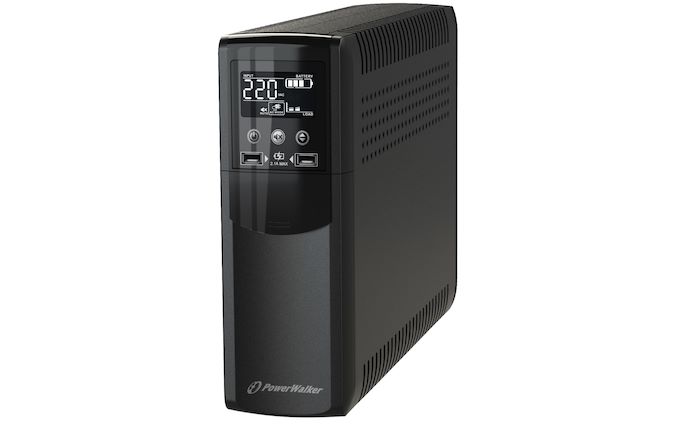
Editor's Note: Today we're kicking off a new review category for AnandTech: Uninterruptible Power Supplies. These devices are becoming increasingly common as desktop users are looking for laptop-like reliability. All the while, it's also an area that we feel is lacking in good, EE-enlightened systematic reviews. So our multi-talented power guru, E. Fylladitakis, is applying his skills to UPSes. As this is a new area for us, please let us know what you think in the comments below!
While Uninterruptible Power Supplies are hardly a new thing in the PC space, the tried-and-true battery backups for desktop PCs have been undergoing a resurgence in popularity in recent years. Improvements in power delivery technology such as GaNs have been reducing costs and improving reliability, and meanwhile lithium-ion batteries, with their much greater energy density/lower volume, are starting to make inroads on the UPS market as well. All the while, with laptops outselling desktops in the consumer PC market, a PC that doesn't shut itself down during a power outage is becoming the norm, rather than the exception. So what better time is there to take a look at UPSes?
To kick off our inaugural UPS review, we're starting with a 1500VA unit from BlueWalker. BlueWalker is a company that originates from Germany and specializes on the design and marketing of power-related equipment. The company was founded in 2004, making it one of the oldest household UPS/AVR manufacturers that still exist to this date.
BlueWalker is marketing their retail products under the PowerWalker brand name and has a very wide portfolio of both hardware and software products available. For today’s review, we are taking a look at the PowerWalker VI 1500 CSW, a 1500VA/900W UPS that boasts a true sinewave output.
| PowerWalker VI 1500 CSW | |||
| Power Capacity | 1500VA/900W | ||
| Output Voltage | 230 VAC | ||
| Input Voltage | 170-280 VAC | ||
| Type | Line Interactive | ||
| True Sinewave | Yes (ish) | ||
| Battery | Lead-Acid, 2x 12V/9Ah | ||
| Full Load Backup Time | 3.5min | ||
| Half Load Backup Time | 10min | ||
| Battery-Backed Sockets | 2 (Type F) | ||
| Surge Protected Sockets | 2 (Type F) | ||
| USB-A Outputs | 2 (2.1A) | ||
| Ethernet Surge Protection | Yes | ||
| LCD Display | Yes | ||
| Dimensions | 99 x 280 x 410 mm | ||
| Weight | 13.1 kg | ||
Given that BlueWalker is a German company, there should be little surprise that the PowerWalker VI is geared towards the European market. The UPS only outputs at a nominal 230V, and similarly, is only designed to accept voltages around that range (sorry, Americans!). Past that, this specific version comes with 2 battery-backed Type F sockets, as well as another two sockets with just surge protection. With 216 Wh of lead-acid battery capacity, it's rated to run a full load for a few minutes, stretching into the double-digits at a half load or less.
Of particular interest with this UPS is the price: true sinewave units have historically carried a significant price premium, but BlueWalker isn't charging nearly the same premium as true sinewave UPSes from other major manufacturers, making the PowerWalker VI 1500 CSW a much cheaper UPS – and at around €180, one that's popular on the market as a result. But can it live up to the same high power delivery expectations without the same wallet-busting price? Let's find out.
The PowerWalker VI 1500 CSW UPS
We received the PowerWalker VI 1500 CSW in a relatively simple cardboard box, with the heavy unit well-protected by thick packaging foam pieces. Inside the box, we found a CD with the compatible monitoring software, thorough manuals in several languages, and a USB cable.
The PowerWalker VI 1500 CSW is a tower-style UPS with an LCD screen at the front. Measuring only 410 mm deep, 100 mm wide, and 280 mm tall (16.2 in × 4 in × 11 in), it is very compact for a unit with that high of an output. There are also two USB charging ports at the front, right under the LCD screen.
The LCD screen, once turned on, will show the basic electrical figures of the unit, such as the voltage, the load, and the remaining battery time. It stays off most of the time and the user needs to press the power button momentarily in order to turn it on.
At the rear side of the tower, we find four power sockets. We are testing the version with the four Schuko (Type F) sockets, but BlueWalker also offers this unit with UK and FR sockets, plus a version with eight IEC socket.
Note that only two sockets offer battery backup, as the other two are for surge protection only. In fact, having just two sockets connected to the unit’s battery backup output is an atypically low number of powered sockets for a 1500VA UPS, as we usually see more.
Along with power protection, there is also a non-destructive circuit breaker and an Ethernet surge protection path (input-output jacks) available with the PowerWalker. Finally, there is a fan that will only turn on when the unit is running on batteries, charging its batteries, or in auto voltage regulation (AVR) mode. The AVR mode essentially has the unit running on grid power but forces the AVR circuit to operate, which may be useful in some situations where the power grid is energized, but very unreliable.
More than half of the front fascia is a door that must be removed in order to access the battery compartment. It is held in place by two small screws at the bottom side of the unit. Once removed, a very large connector can be seen that connects the batteries to the main unit. This needs to be unplugged in order to remove the batteries. If the batteries need to be replaced, the wiring must be unplugged and transferred to the new batteries. We found two Leoch 12V 9Ah batteries in the unit, connected in series (24V 9Ah output). Leoch is a Chinese manufacturer of batteries that is amongst the largest on the planet and whose products are considered to be of fairly good quality.
Cracking open the unit’s body, we can see the unit’s large transformer and circuitry. The transformer actually is not very large for the 1500 VA unit and the amount of cooling it receives from the fan is fairly low. This will not be a problem for the stock unit, where the batteries will likely last just a few minutes, as there will not be enough time for the transformer to overheat. Modifying the unit’s batteries to increase its autonomy in any way without greatly upgrading its cooling capabilities would be, however, nothing short of suicidal.
The power circuitry left us with mixed feelings. The relays are supplied by Golden Relays, a reputable manufacturer, yet the capacitors are supplied by Aishi and Jamicon, suppliers that are considered to be mediocre. Eight IRF3205 MOSFETs generate the output when the unit switches to its batteries, MOSFETs that are proven to be reliable but, having been released well over two decades ago, are nowadays very cheap and their performance is relatively poor compared to more modern MOSFETs. The workmanship is very good but the circuitry layout is fairly outdated.


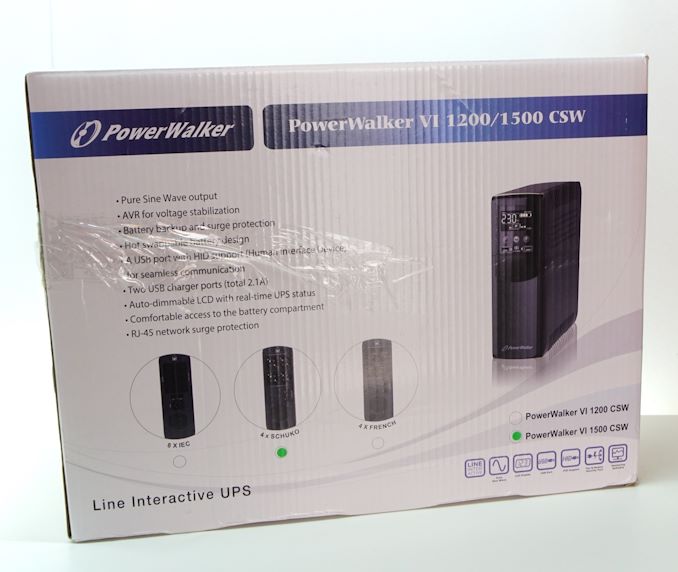

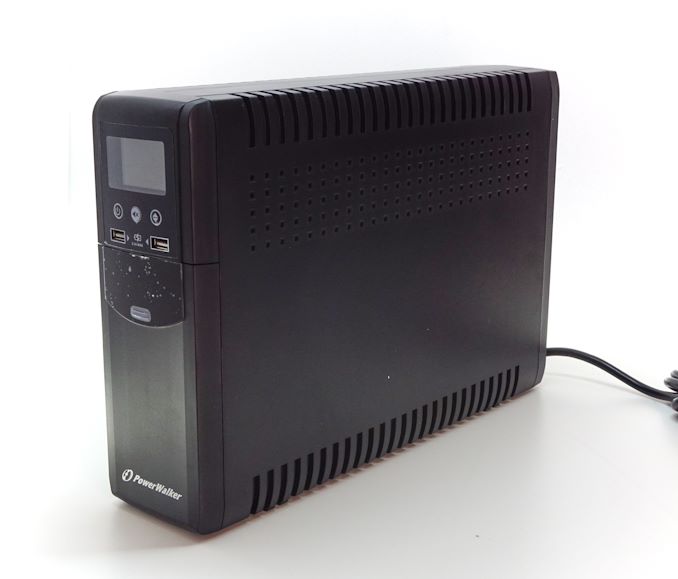
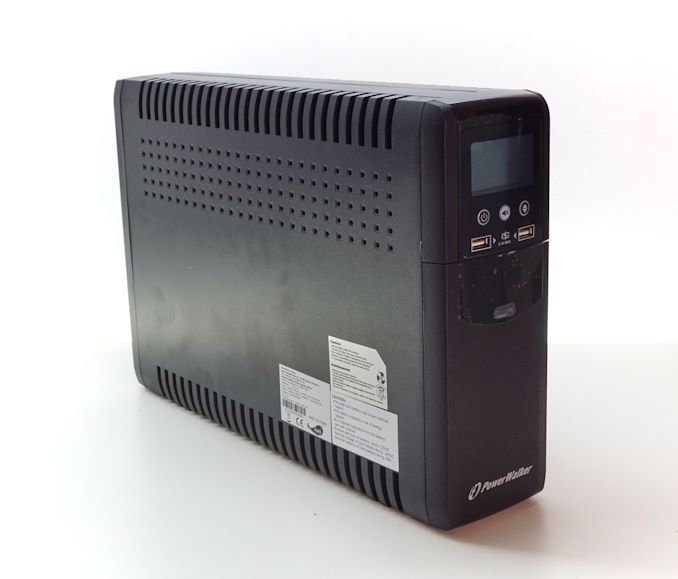
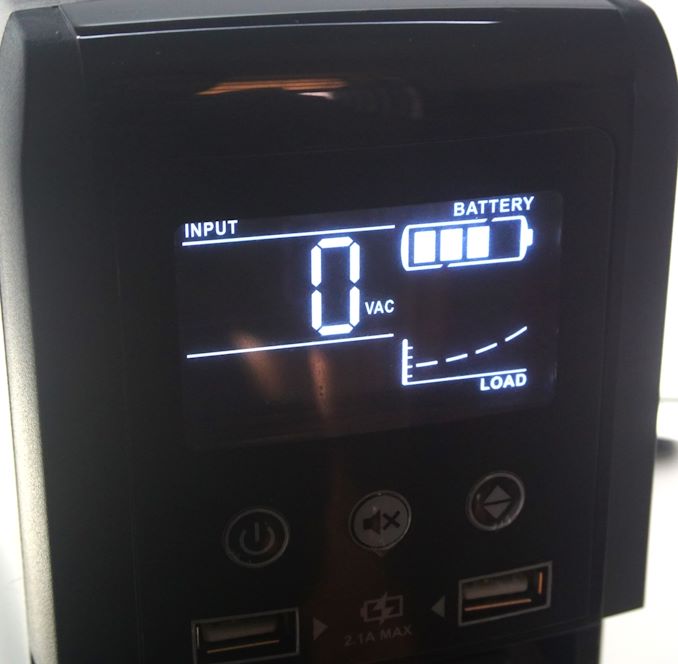

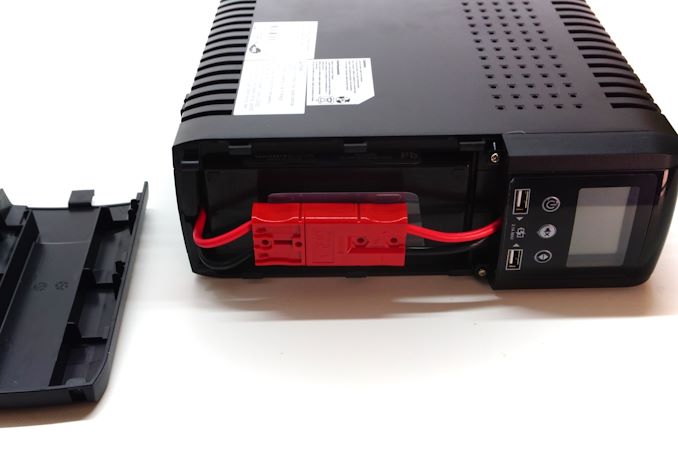
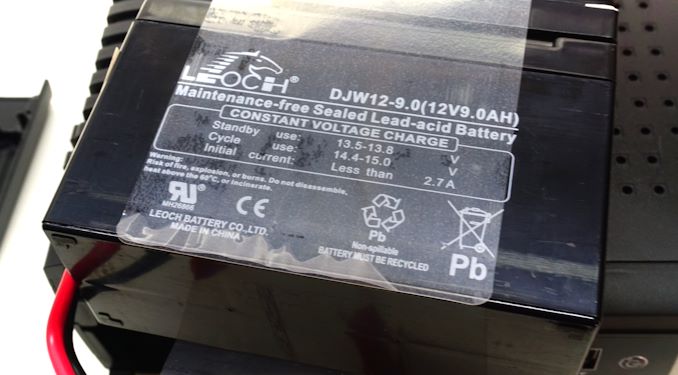
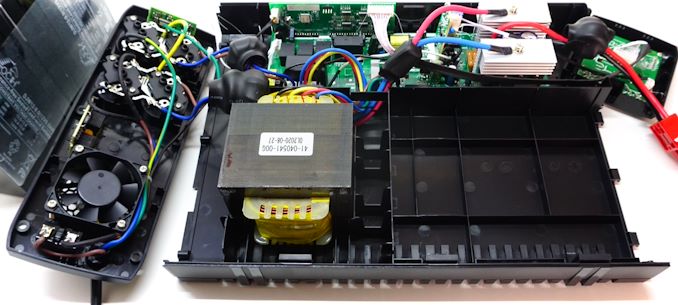

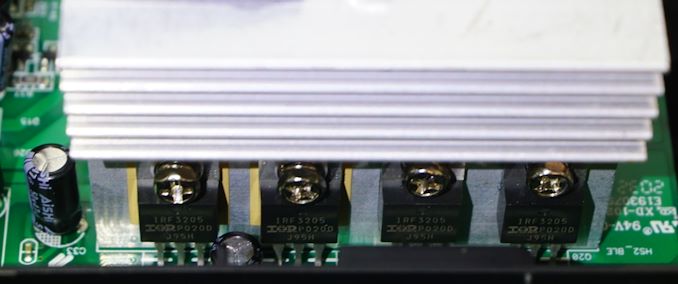

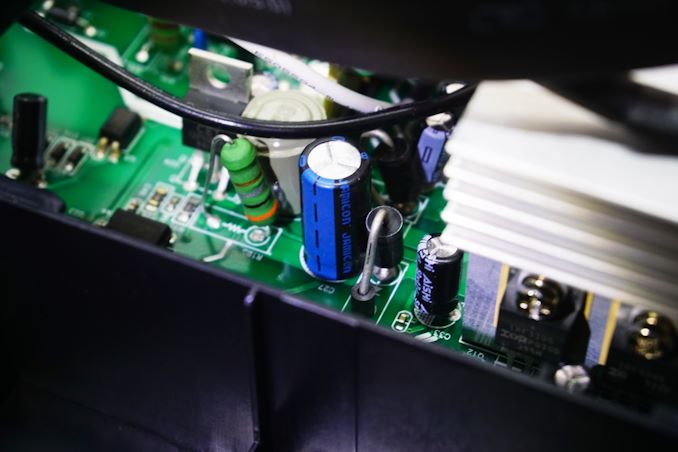
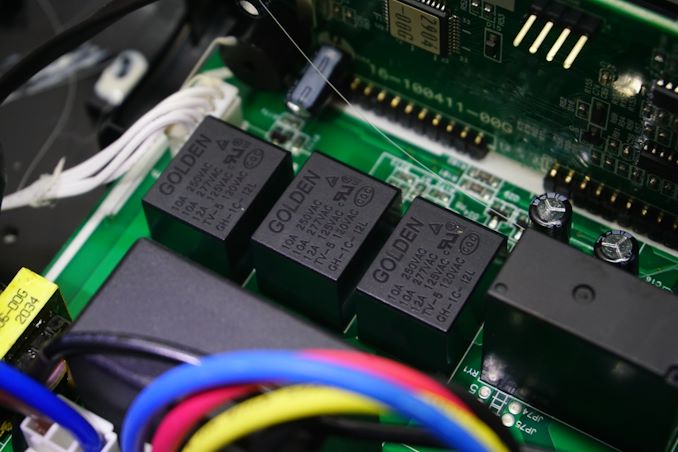








107 Comments
View All Comments
kpp - Wednesday, April 20, 2022 - link
I had this 50w while on standby figure on 2 Mustek 2000VA that I used to own. I had a powermeter in the wall socket and was amazed when I noticed this. This was constant, not while charging.ranran - Friday, April 15, 2022 - link
I think this is a great idea/category, but I'm surprised you chose a European-market focused brand that is not really available here in the West.Perhaps you could consider doing reviews on the top two UPS companies, APC and Cyberpower? Expand this review to include comparisons with Cyberpower's CP1500PFCLCD and APC's BR1500MS true sinewave systems?
DanNeely - Friday, April 15, 2022 - link
If you have any contacts with those companies that could help convince them to send a sample to Greece I'm certain Ryan Smith and E. Fylladitakis would be grateful for your assistance. 🙄https://twitter.com/RyanSmithAT/status/15142159668...
nikitas589 - Friday, April 15, 2022 - link
Nice review. Yes, UPS reviews are definitely useful. And the noise test/commentary Ishould definitely be include for any UPS that may find its way to a home office /setting. One thing toe consider perhaps, speaking from experience, is the not all surge/power cut events register trigger a UPS (standby or interactive) to take over. For example I had a power cut trigger it while a milliseconds "on/off" type of thing did not and the PCs simply lost power. So you may want devise a couple of tests that are not instrument based or linear but more brutal ( pull the plug momentarily /tripping over the power cable for example, switch power on off, vary the timings, etc ) that are closer to what may happen to some of us. Still, UPS reviews: nice keep them coming..:-)mode_13h - Tuesday, April 19, 2022 - link
> I had a power cut trigger it while a milliseconds "on/off" type of thing did not and the PCs simply lost power.I've never seen a UPS fail to intervene in a power event that resulted in a PC rebooting. I'm not saying it doesn't happen, but not with the APC UPS units that I've used at home and at work.
swizznowt - Friday, April 15, 2022 - link
0.6 power factor, line interactive, no isolation, no common mode/normal mode protection. It's an APC by another name. Junk!Samus - Monday, April 18, 2022 - link
Could you perhaps determine what the trickle\standby voltage of the battery charging circuit is? I've seen a few models of APC UPS's lately that seem to overcharge the batteries to 12.8-13.1v, dramatically shortening their lifespan. One set of batteries from an APC XS1000 were so swollen they had to be pryed out and the unit\batteries were only 3 years old!Samus - Monday, April 18, 2022 - link
Specifically, could you test the measured float voltage of the batteries in UPS reviews?NeatOman - Monday, April 18, 2022 - link
For funzies YEARS ago when li-ion battery banks first started to become available for about $250, i found one with a pure sine wave and used it as a battery for a cart in a warehouse with 20" monitor, laptop, and label printer.That worked fantastic, then i got another one for a business with super flaky power that went in and out and at times read 90v from the wall, and computers and printers would have issues working. This time not only did it work as a UPS but also a line conditioner, you see these on servers all the time (there not just power strips sometimes). Basically the wall would charge/power whatever it could and the inverter would always be the one sending the power as a true "uninterruptable" power supply. It would correct, say 90v or 130v to a very stable 120v at the cost of loosing a bit of efficiency and also act as a far better surge protector. Surge suppressor should be your minimum when protecting your equipment, it ensures you don't get over voltage or "dirty" power. Anywho, a li-ion powered ups should be the norm for spending $200. Not only does it have more power, also smaller, charges much faster (recovery times between outages). Specifically LiFePO4 (lithium iron) batteries would be best, about 2-3 times the duty cycle of li-ion and higher amperage (can be smaller/less capacity and still have enough power for devices).
Oxford Guy - Thursday, April 21, 2022 - link
‘should be the norm’As should product truthfulness, rather than claiming sine wave output when that begins to fail beyond 25% load. Sadly, humanity is full of falsehoods for ‘profit’.